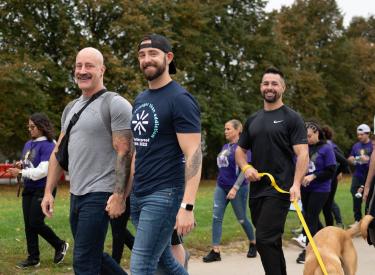
This Valentine's Day, Give the Gift of Compassion
Love and compassion are fundamental for addiction recovery. Compassion literally means “to suffer together,” and it has two basic parts: empathy for other people's suffering and the deep desire to relieve that suffering.
As a parent of a child who faced addiction for almost 10 years, I am all too familiar with the anguish involved with watching a loved one in the clutches of this disease. I was overwhelmed both by the love for my child and by frustration because I didn’t know how to help improve the circumstances.
My son died by suicide in 2011 at the age of 25 after being in recovery for more than a year. He felt such deep shame related to his addiction that he didn’t know how to move on from it.
Today, more than 46 million Americans are living with a substance use disorder (SUD), according to recent research from the Substance Abuse and Mental Health Services Administration (SAMSHA). And according to the Centers for Disease Control and Prevention (CDC), drug overdose is a leading cause of accidental death in the U.S.
For more than half a century, those in the addiction field used what was considered high-confrontation treatment aimed at “breaking through” a person’s supposed “denial” or resistance to treatment. But many in the field now understand — and studies have proven — that this type of intervention approach increases resistance.
The common denominator to obtain the most effective response from someone dealing with a SUD is that loved ones show empathy in addition to love. Groundbreaking science is shedding more light on the neurobiology of love and connection as they relate to recovery. We’ve found potentially promising new avenues for treating a SUD thanks to a neurotransmitter called oxytocin. It’s also known as the “love molecule.” With the science on our side, we now know there are more effective ways for parents and loved ones to address their loved ones who are living with addiction:
- Show empathy in addition to love. Tell the person who is struggling, “This must be hard for you.
- Know you’re not alone. Families should feel empowered to reach out to gain support from others.
- As a parent, avoid feeling guilt. Your child is dealing with a disease, and you can help them navigate it through love, dignity, compassion and perseverance.
- Model recovery language and avoid stigmatizing language. The Shatterproof Addiction Language Guide is one example of how to do that.
Compassion is the most powerful tool you can have when it comes to healing. Through compassion, we let our loved ones know that we really see them and we recognize their suffering, and that they have every right to express pain, sadness, fear, anger or any other emotion due to their suffering. In other words, we validate or confirm their experience of suffering, allowing them to feel seen. We don’t deny, minimize, ignore, or otherwise invalidate it.
Compassion is especially effective when it comes to the issue of shame, as they are closely connected. Shame is toxic and eats at people. The good news is, it can be neutralized by the antidote of compassion. And, as it turns out, compassion is the only thing that can counteract the isolation and other negative effects caused by shame. Compassion is the single most powerful tool you will have for not only helping your loved one, but helping yourself as you take on the role of supporter or collaborator.
Remember, addiction is not a moral failing, a choice, or a character flaw. Addiction is a disorder of the most complex human organ — the brain. It is an illness, and all major health experts agree, including The American Medical Association, The National Institutes of Health and the World Health Organization.
Addiction is a treatable, preventable and curable chronic disease, and with a standard of care and evidence-based quality treatment coupled with love and compassion, we can help our loved ones recover.
By following these simple guidelines, you can begin to provide a compassionate environment that will act as a safe and secure place for your loved one to be in. This safety and security will, in turn, help them to take the steps needed in order to recover.




